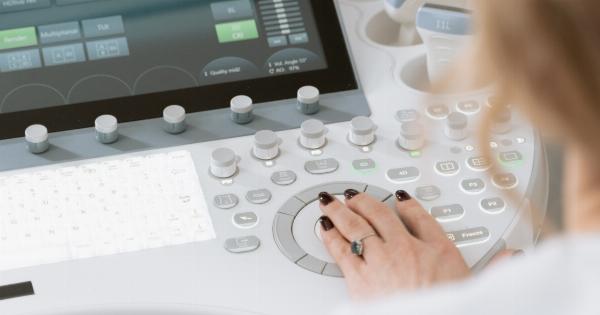Prostate cancer is a prevalent form of cancer that affects the prostate gland, a small walnut-shaped organ found only in men.
It is estimated that one in seven men will be diagnosed with prostate cancer during their lifetime, making it a significant health concern. Early detection is key to successfully treating prostate cancer, and researchers are constantly seeking innovative methods to improve the diagnostic process.
One intriguing concept that has emerged in recent years is the potential ability to detect prostate cancer through the examination of a person’s fingers.
Although this may sound far-fetched, researchers have found interesting connections between finger characteristics and the risk of developing prostate cancer. In this article, we will explore the science behind this theory and its potential implications for early detection.
Understanding prostate cancer
Before delving deeper into the relationship between fingers and prostate cancer, it’s essential to have a basic understanding of the disease itself.
The prostate gland is responsible for the production of semen, a fluid that carries sperm during ejaculation. Like any other part of the body, the prostate can develop cancerous cells that multiply and form tumors.
Prostate cancer typically grows slowly and remains confined to the gland in its early stages. It may not cause noticeable symptoms, making regular screenings all the more crucial.
If left untreated, prostate cancer can spread beyond the prostate, affecting surrounding tissues and potentially reaching distant parts of the body.
The link between fingers and prostate cancer
Several scientific studies have explored the potential connections between finger characteristics and prostate cancer. The most notable aspect revolves around the ratio of the lengths between the index and ring fingers, known as the 2D:4D ratio.
This ratio has been suggested to correlate with prenatal exposure to sex hormones, particularly testosterone.
Research suggests that individuals with a lower 2D:4D ratio, meaning the ring finger is longer than the index finger, may have a higher risk of developing prostate cancer.
A study published in the British Journal of Cancer found that men with a low 2D:4D ratio were more likely to have prostate cancer compared to those with a higher ratio.
Furthermore, another study conducted by the University of Warwick in the United Kingdom analyzed more than 1,500 prostate cancer patients.
They observed that men with a low 2D:4D ratio had a higher risk of developing aggressive and deadly forms of prostate cancer.
Digit ratio and hormone exposure
It’s important to note that the 2D:4D ratio is not solely an indicator of prostate cancer risk but rather a reflection of prenatal hormone exposure.
The length of fingers is determined during fetal development and is influenced by sex hormones, particularly testosterone. The theory suggests that a longer ring finger, indicating higher prenatal testosterone exposure, may contribute to a reduced risk of developing prostate cancer.
During pregnancy, testosterone levels impact the development of various organs, including the prostate gland.
Higher exposure to testosterone during fetal development may result in a more robust and healthier prostate, which could explain the correlation between finger characteristics and prostate cancer risk.
Can finger length ratio be used as a diagnostic tool?
While the link between finger length ratio and prostate cancer risk appears intriguing, it is essential to clarify that it should not be used as a standalone diagnostic tool.
The 2D:4D ratio is just one of many potential risk factors for prostate cancer. Other factors, such as age, family history, ethnicity, and lifestyle choices, also contribute to a person’s overall risk profile.
Currently, healthcare professionals rely on a variety of diagnostic methods to detect and confirm prostate cancer, including blood tests, physical examinations, biopsies, and imaging techniques like ultrasounds and magnetic resonance imaging (MRI).
These established methods remain the gold standard for diagnosing prostate cancer, and finger length ratio is not yet considered a routine part of the diagnostic process.
The future of prostate cancer detection
Although finger length ratio may not be a definitive diagnostic tool for prostate cancer, it is an area of ongoing research. Scientists are continually exploring new avenues for early detection and improved understanding of this cancer.
By studying finger characteristics, researchers hope to uncover larger patterns and identify potential biomarkers that can aid in the early detection of prostate cancer.
Advancements in technology, such as artificial intelligence and machine learning algorithms, have the potential to revolutionize prostate cancer detection.
Scientists are developing automated image recognition systems that can examine finger and hand images in large datasets, searching for potential correlations with prostate cancer risk.
Importance of early detection
Early detection is vital in managing and treating prostate cancer effectively. When diagnosed in its early stages, prostate cancer has the potential to be curable.
Regular screenings, including prostate-specific antigen (PSA) blood tests and digital rectal exams (DRE), are recommended for men starting at a certain age or for those with risk factors.
Discussing concerns with a healthcare provider is crucial. They can evaluate personal risk factors and recommend an appropriate screening schedule tailored to individual needs.
While finger length ratio alone may not be sufficient for diagnosis, it highlights the importance of staying vigilant and proactive about one’s health.
Conclusion
While finger characteristics may provide some insights into prostate cancer risk, they should not be solely relied upon for diagnosis.
Currently, established diagnostic methods, such as blood tests and imaging techniques, remain the most reliable tools for detecting prostate cancer.
However, ongoing research in this area offers hope for the future. Scientists are dedicated to discovering innovative ways to detect prostate cancer at earlier stages, ultimately improving treatment outcomes and prognosis.
It is essential for individuals to stay informed about the latest advancements and consult with healthcare professionals for accurate diagnosis and appropriate screenings.




























